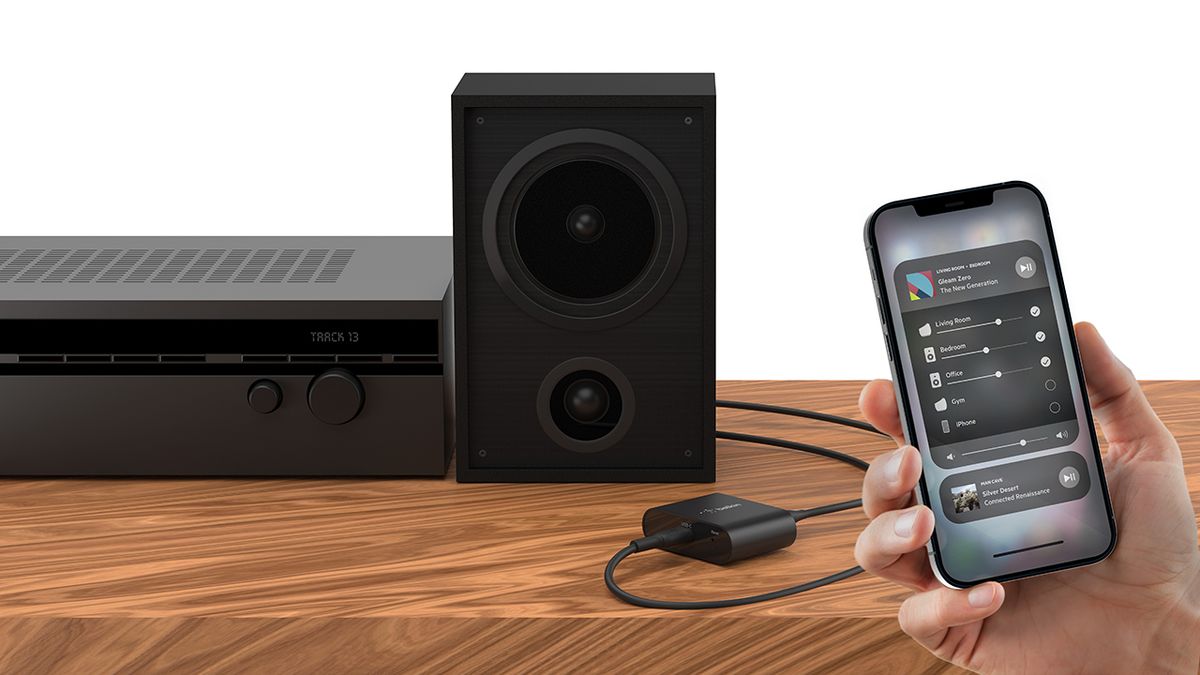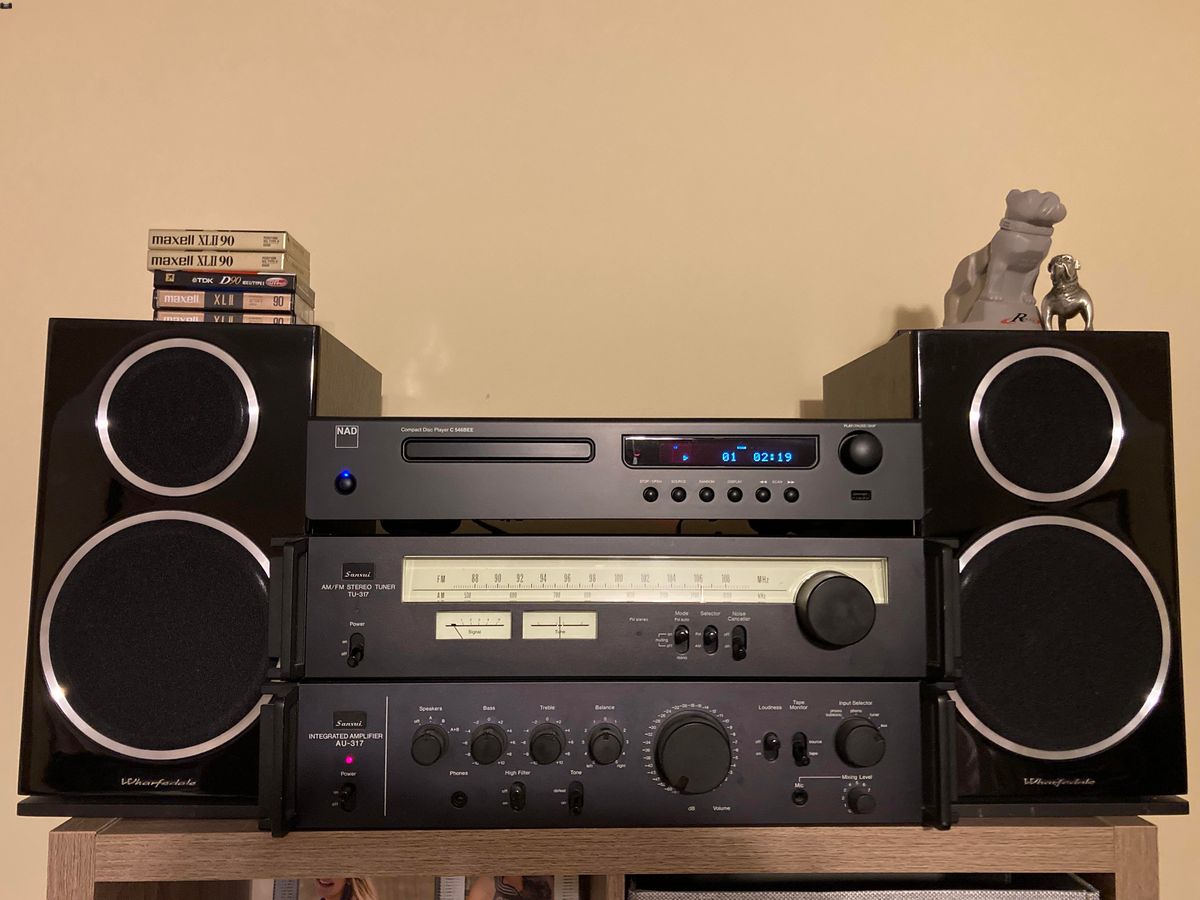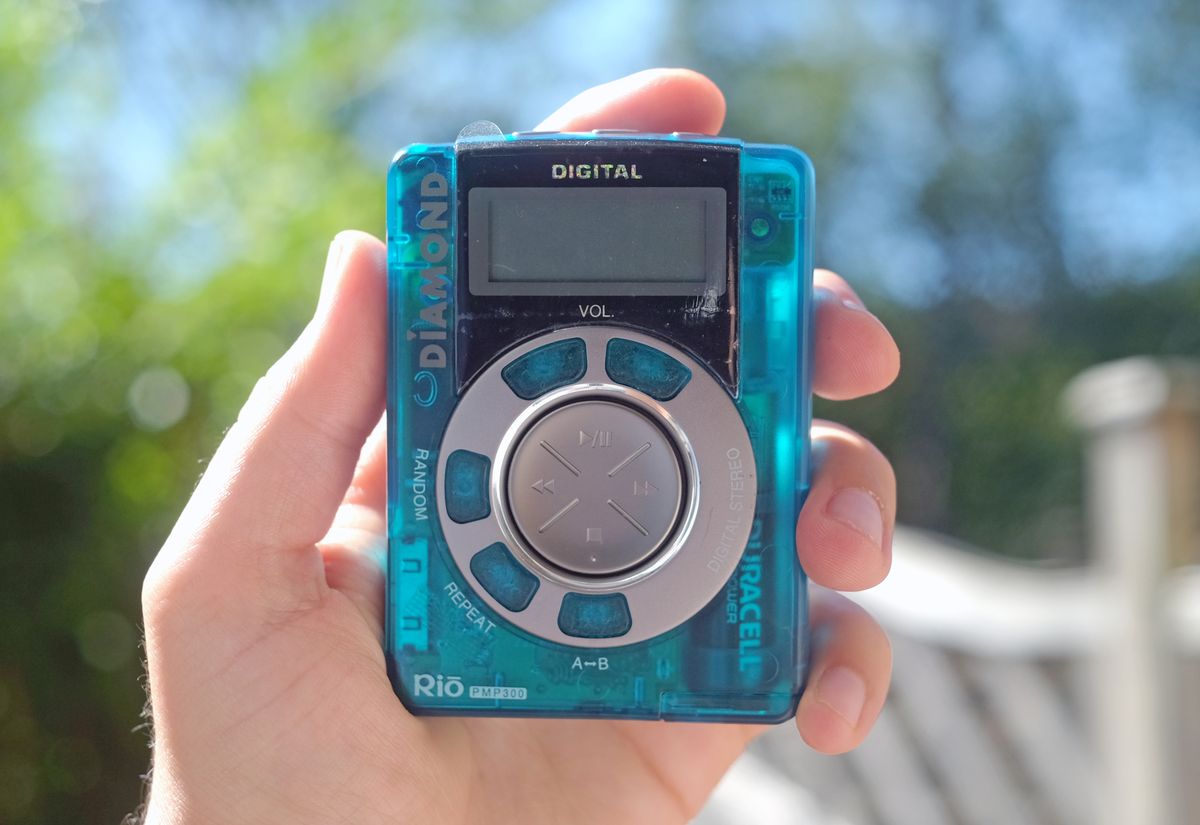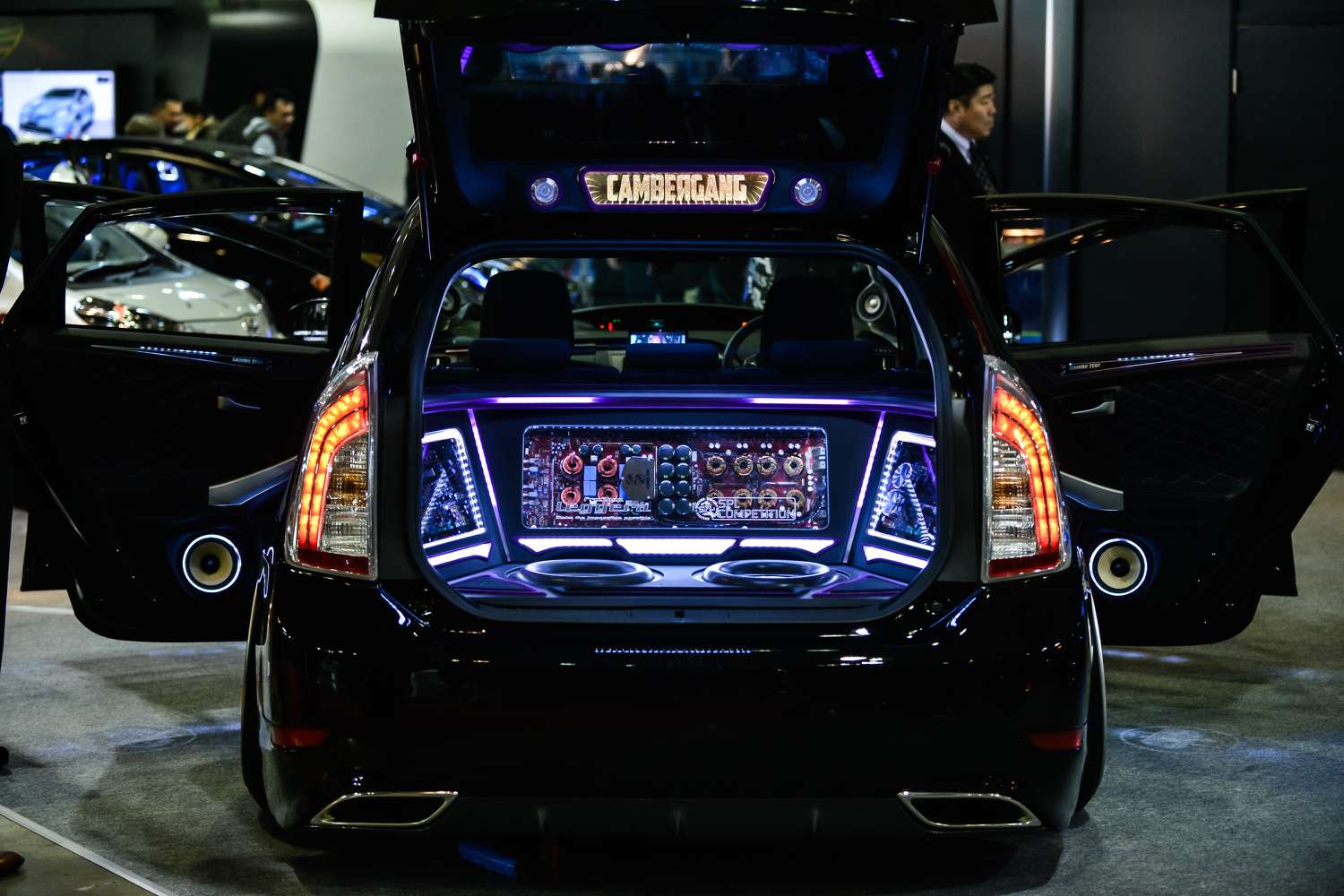Home>Production & Technology>Stereo>How To Connect IPhone To Home Stereo System


Stereo
How To Connect IPhone To Home Stereo System
Modified: January 22, 2024
Learn how to connect your iPhone to a home stereo system and enjoy high-quality sound. Discover easy steps to enhance your audio experience with your stereo.
(Many of the links in this article redirect to a specific reviewed product. Your purchase of these products through affiliate links helps to generate commission for AudioLover.com, at no extra cost. Learn more)
Table of Contents
Introduction
Connecting your iPhone to a home stereo system allows you to enjoy your favorite music, podcasts, and audio content through high-quality speakers. Whether you want to set the mood for a party or simply improve the sound experience, there are several options available to connect your iPhone to a home stereo system.
In this article, we will explore various methods for connecting your iPhone to a home stereo system. We will cover options such as using Bluetooth technology, audio cables, Apple AirPlay-enabled devices, and digital-to-analog converters (DACs). By following these methods, you can easily achieve a seamless audio connection and elevate your listening experience.
Please note that the specific steps may vary depending on your home stereo system and iPhone model. It is always advisable to consult the user manual for your stereo system and iPhone to ensure compatibility and maximize functionality.
Now, let’s dive into the different options available to connect your iPhone to a home stereo system.
Option 1: Connecting via Bluetooth
Connecting your iPhone to a home stereo system via Bluetooth is a convenient and wireless option. Most modern home stereo systems come equipped with Bluetooth technology, allowing you to easily pair and stream audio from your iPhone.
To connect your iPhone to a Bluetooth-enabled home stereo system, follow these steps:
- Ensure that Bluetooth is enabled on both your iPhone and your home stereo system.
- On your iPhone, go to “Settings” and tap on “Bluetooth.”
- Toggle the Bluetooth switch to the “On” position.
- On your home stereo system, follow the manufacturer’s instructions to put it in pairing mode.
- Once in pairing mode, your home stereo system will appear in the list of available devices on your iPhone.
- Select your home stereo system from the list to establish the connection.
- Once connected, you can play your desired audio content on your iPhone, and it will be streamed wirelessly to your home stereo system.
It’s important to note that the range of Bluetooth connection can vary depending on your home setup. Typically, Bluetooth has a range of 30 feet (10 meters), so ensure that your iPhone is within this range of your home stereo system for a stable connection.
Connecting via Bluetooth offers the advantage of mobility, allowing you to control your audio playback from your iPhone without being tethered to the stereo system. Additionally, multiple devices can be connected to the stereo system via Bluetooth, giving you the flexibility to share audio with friends and family.
However, it’s worth mentioning that Bluetooth audio streaming may result in some loss of audio quality compared to a wired connection. The audio may be compressed during transmission, which can lead to a slight degradation in sound fidelity. Nonetheless, for most casual listeners, the convenience and freedom that Bluetooth provides outweigh these minor compromises.
Now that you know how to connect your iPhone to a home stereo system via Bluetooth, let’s explore another option: using an audio cable.
Option 2: Using an Audio Cable
If you prefer a wired connection with optimal audio quality, using an audio cable to connect your iPhone to a home stereo system is an excellent choice. This method ensures a direct and uninterrupted audio signal transfer, resulting in high-fidelity sound reproduction.
To connect your iPhone to a home stereo system using an audio cable, follow these steps:
- Check the available audio input ports on your home stereo system. Common options include RCA, 3.5mm headphone jack, or optical input.
- Purchase the appropriate audio cable that matches the audio input ports on both your iPhone and home stereo system. For example, if they both have a 3.5mm headphone jack, you can use a standard 3.5mm to 3.5mm audio cable.
- Plug one end of the audio cable into your iPhone’s audio output port. If you have a newer iPhone model without a dedicated headphone jack, you will need a lightning to 3.5mm audio adapter.
- Connect the other end of the audio cable to the corresponding input port on your home stereo system.
- Select the appropriate audio input on your home stereo system to ensure the sound is routed from your iPhone.
- Now, play your preferred audio content on your iPhone, and you will hear it through your home stereo system.
Using an audio cable provides a reliable, lossless connection, resulting in pristine sound quality. It is particularly beneficial for audiophiles or those who seek the highest level of audio fidelity. Additionally, using an audio cable eliminates the need for a stable internet connection, as the audio is directly transmitted from your iPhone to the stereo system.
Keep in mind that the length of the audio cable may impact the audio quality. Longer cables can introduce signal degradation and interference. Therefore, it is advisable to choose an appropriate length based on the distance between your iPhone and home stereo system.
Now that you know how to connect your iPhone to a home stereo system using an audio cable, let’s explore another option: using an Apple AirPlay-enabled device.
Option 3: Using an Apple AirPlay-enabled Device
If you have an Apple AirPlay-enabled device, such as an Apple TV or a wireless speaker system, you can easily connect your iPhone to a home stereo system using AirPlay. AirPlay allows for wireless audio streaming, providing a seamless and convenient way to enjoy your music and other audio content.
To connect your iPhone to a home stereo system using an Apple AirPlay-enabled device, follow these steps:
- Ensure that your iPhone and the AirPlay-enabled device are connected to the same Wi-Fi network.
- On your iPhone, swipe down from the top-right corner of the screen (or up from the bottom on older iPhone models) to access Control Center.
- Tap on the “Screen Mirroring” or “AirPlay” icon.
- A list of available AirPlay-enabled devices will appear. Select the device you want to connect to.
- Your iPhone’s audio output will now be routed to the selected AirPlay-enabled device, which can be connected to your home stereo system.
- Ensure that the AirPlay-enabled device is connected to your home stereo system, either through an audio cable or wirelessly if supported.
- Play your desired audio content on your iPhone, and you will hear it through your home stereo system.
Using an Apple AirPlay-enabled device provides the advantage of wireless audio streaming, eliminating the need for physical cables. It allows you to control the audio playback from your iPhone, giving you the flexibility to move around your home while enjoying your favorite tunes.
It’s important to note that Apple AirPlay is a proprietary technology and is primarily compatible with Apple devices and AirPlay-enabled devices. Ensure that your home stereo system or the connected device supports AirPlay functionality before attempting to connect your iPhone.
Now that you know how to connect your iPhone to a home stereo system using an Apple AirPlay-enabled device, let’s explore another option: using a Digital-to-Analog Converter (DAC).
Option 4: Using a Digital-to-Analog Converter (DAC)
If you have a high-quality home stereo system without built-in digital connectivity, using a Digital-to-Analog Converter (DAC) is an excellent solution to connect your iPhone. A DAC converts the digital audio signal from your iPhone into an analog signal that can be processed and amplified by your home stereo system.
To connect your iPhone to a home stereo system using a DAC, follow these steps:
- Purchase a DAC that supports iPhone connectivity. Look for models that have a Lightning or USB-C input to ensure compatibility with your iPhone.
- Connect the DAC’s Lightning or USB-C input to your iPhone’s corresponding port.
- Connect the DAC’s analog output to an available audio input on your home stereo system. This can be done using standard RCA cables or other compatible audio cables.
- Power on the DAC if required, and ensure that the audio input on your home stereo system is set to receive audio from the connected DAC.
- Play your desired audio content on your iPhone, and the signal will be converted by the DAC and transmitted to your home stereo system for playback.
Using a DAC ensures optimal audio quality, as it bypasses the internal digital-to-analog conversion of your iPhone and utilizes a dedicated converter for accurate signal reproduction. This can result in enhanced sound clarity and detail, especially when paired with a high-quality DAC.
It’s worth noting that the performance and audio quality of the DAC may vary depending on the model and brand. Therefore, it is recommended to do thorough research and choose a DAC that suits your budget and audio requirements.
Now that you know how to connect your iPhone to a home stereo system using a DAC, you have explored various options to enhance your audio experience. Whether you prefer wireless connectivity through Bluetooth or AirPlay, or the precision of a wired connection with an audio cable or DAC, you can now enjoy your favorite music and audio content with improved sound quality.
Choose the option that best fits your needs and enjoy a seamless and immersive audio experience with your iPhone and home stereo system.
Conclusion
Connecting your iPhone to a home stereo system opens up a world of possibilities for enjoying your favorite music, podcasts, and audio content. In this article, we explored four different options for connecting your iPhone to a home stereo system: Bluetooth, audio cables, Apple AirPlay-enabled devices, and Digital-to-Analog Converters (DACs).
If you value convenience and wireless connectivity, Bluetooth is a great option. Simply pair your iPhone with a Bluetooth-enabled home stereo system, and you can enjoy your audio content without the need for cables. Keep in mind that there may be a slight trade-off in audio quality due to compression during transmission.
For those seeking the best audio quality and a stable connection, using an audio cable is the way to go. This method provides a direct and lossless audio transfer, resulting in pristine sound reproduction. Be sure to choose the appropriate cable based on the audio input ports of your iPhone and home stereo system.
If you have an Apple AirPlay-enabled device, such as an Apple TV or wireless speaker system, utilizing AirPlay offers wireless audio streaming with ease. It allows you to enjoy your music and other audio content with the freedom to move around your home, all while benefiting from a high-quality audio experience.
Finally, for audiophiles with a high-quality home stereo system, using a Digital-to-Analog Converter (DAC) provides optimal audio performance. The DAC converts the digital audio signal from your iPhone into an analog signal, offering enhanced sound clarity and detail.
Ultimately, the method you choose to connect your iPhone to a home stereo system depends on your preferences, equipment compatibility, and desired audio quality. Each option provides its own benefits and considerations. Take the time to evaluate your needs and choose the option that best suits your requirements.
Now that you have a comprehensive understanding of how to connect your iPhone to a home stereo system, you can elevate your audio experience and enjoy your favorite content with exceptional sound quality. So go ahead, connect your iPhone, and immerse yourself in the world of captivating audio.











